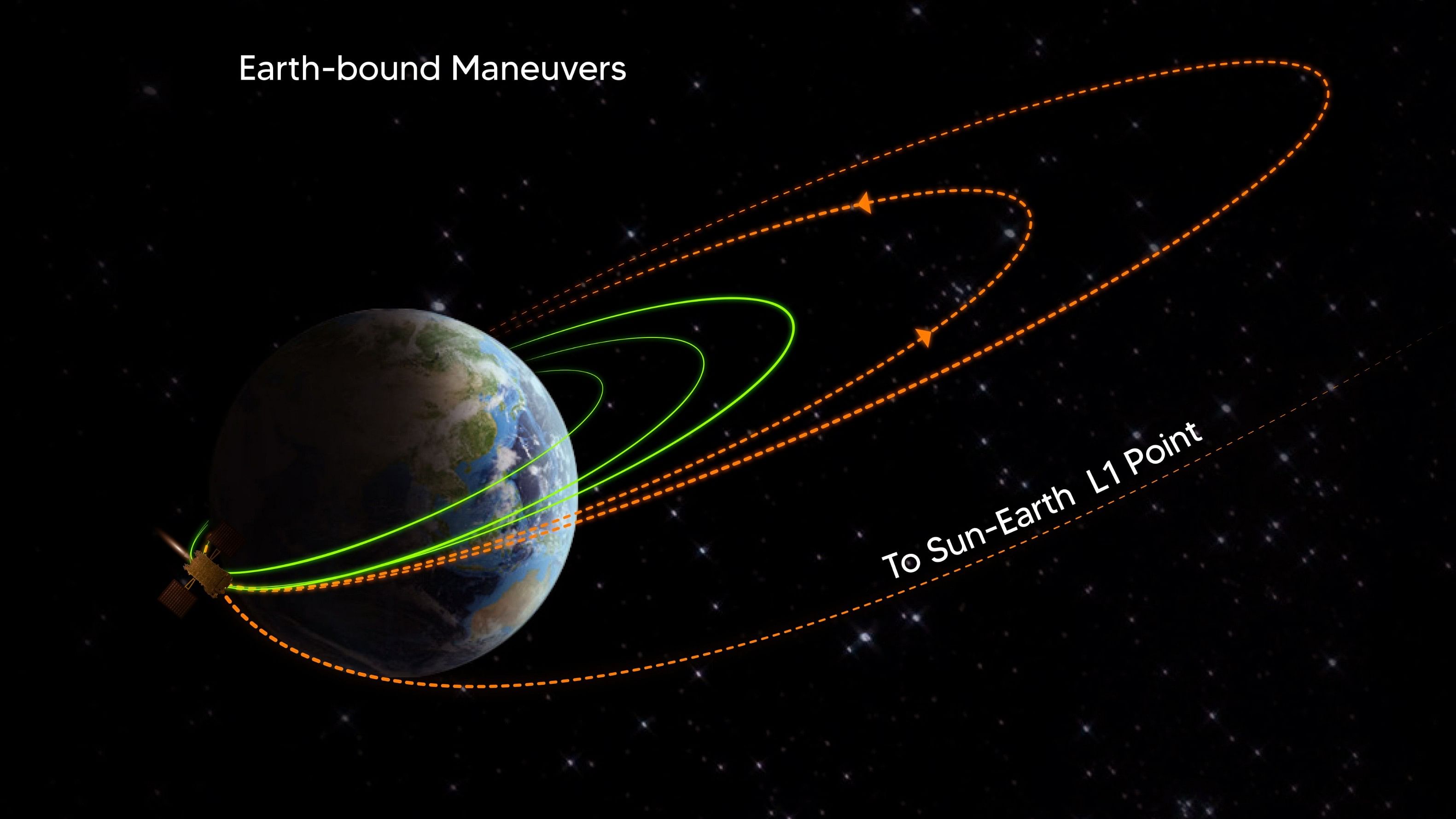
Photo by Isro of maneuvers of the Aditya-L1.
Credit: X/@isro
Bengaluru: India’s 126-day run-up to a vantage point to study the sun found the decisive final thrust on Saturday, with the Indian Space Research Organisation (ISRO) binding Aditya-L1 to a halo orbit around the first Lagrangian point (L1) of the sun-earth system.
The Halo-Orbit Insertion (HOI) of Aditya-L1, India’s first space-based observatory to study the sun, was achieved at around 4 pm when the control engines were fired for a short duration, marking the final phase of the manoeuvre.
With two trajectory correction manoeuvres (TCMs), ISRO had oriented Aditya-L1 toward the halo orbit. When the spacecraft reached the HOI condition (that ensures minimum fuel consumption), the final firing was done, aligning the spacecraft with the intended orbit. An HOI failure could have seen the spacecraft move away from L1 in the direction of the sun.
ISRO chairman S Somanath said the mission was for the “whole world”. Speaking to reporters, he said the satellite was moving toward the intended halo orbit but the space agency had to make corrections to its course for it to attain the right positioning and velocity.
“We have achieved the exact placement and velocity (31 metres per second). The satellite is at the right place now but we will monitor it for the next few hours. If it drifts, we will have to do corrections. We don’t expect that to happen,” he said.
The HOI involved constant monitoring along with the adjustment of the spacecraft’s speed and position by using onboard thrusters. The insertion demanded precise navigation and control and its success validated capabilities for complex orbital manoeuvres and future interplanetary missions, the space agency said.
The 1,480-kg observatory with seven payloads was launched on PSLV-C57 from the Satish Dhawan Space Centre in Sriharikota, on September 2, 2023.
The Aditya-L1 payloads will observe the sun’s photosphere (its visible surface), corona (its outermost layer), and chromosphere (the atmospheric layer in between). They are designed to provide insights into coronal heating, space weather, magnetic field measurements in the corona, and plasma and magnetic field eruptions from the corona — the Coronal Mass Ejections (CMEs).
Why a halo orbit
The halo orbit is a three-dimensional orbit at L1, located about 1.5 million km from the earth, and has an orbital period of about 177.86 earth days. ISRO said this orbit — involving the sun, the earth and the spacecraft — was chosen to ensure a mission lifetime of five years.
At L1 in the sun-earth system, the gravitational forces from the two bodies equal the centripetal force required for a smaller object — the spacecraft — to move with them. This positioning facilitates an uninterrupted observation of the sun with minimal manoeuvres and fuel consumption, and enables continuous communication with ground stations.
Located outside of earth’s magnetosphere, the halo orbit is also more suitable than a low earth orbit to conduct in situ sampling of the solar wind and particles.
Observations from primary payload
The mission’s primary payload, the Visible Emission Line Coronagraph developed by the Indian Institute of Astrophysics (IIA) in Bengaluru, is designed to study solar corona and the dynamics of CMEs.
IIA Director Prof Annapoorni Subramaniam said doors of the coronagraph were not opened during the spacecraft’s cruise phase.
“Once the orbit is stabilised and the instrument is pointed toward the sun, we will open the doors.
There are pre-decided sequential steps, and reviews, that will set it up for the mission. The processes will take more than a month,” she told DH.
Instruments onboard the spacecraft including the Solar Wind Ion Spectrometer (SWIS) have commenced operations.